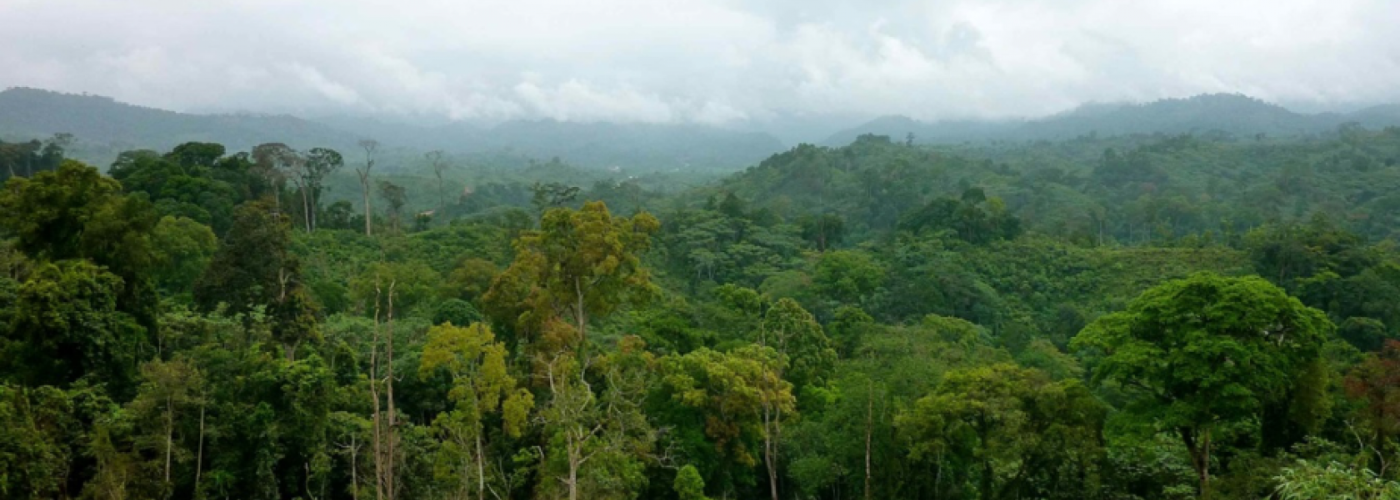Context
Tropical forests are a powerful weapon against climate change. They are indeed huge carbon sinks. They alone contain 250 billion tonnes of carbon. But if we are not careful, the forests could lose this storage capacity sooner than expected. What does this study tell us?
In the 1990s, intact tropical forests still captured 17% of the CO2 emitted by humans. In the 2000s, this figure was still 9% and in the 2010s it rose to 6%. On the one hand, intact tropical forests are losing their capacity to store carbon and the total surface area of these forests is decreasing, and on the other hand, human greenhouse gas emissions have increased by 46%.
It is estimated that intact tropical forests captured about 46 billion tonnes of CO2 from the atmosphere in the 1990s. However, in the years 2010 they captured 25 billion tonnes. The difference of 21 billion tonnes is equivalent to ten years of fossil fuel emissions from the UK, Germany, France and Canada combined.
The main cause of the decline in the capacity to capture carbon is, according to scientists, increased tree mortality. "Normally, CO2 stimulates tree growth, but due to climatic disturbances - higher temperatures, drought, etc. - it can cause trees to die. - growth is slowed down and some trees may even die," explains Wannes Hubau, affiliated with the Royal Museum for Central Africa and lead author of the publication in the renowned journal Nature, which presents his research.
The solution
A recent study carried out on 565 intact tropical forests in the Congo and the Amazon basin.
This study was carried out over 30 years by more than 100 academic institutions, including the AfricaMuseum. "This study provides the first large-scale evidence that carbon sequestration by the world's tropical forests is already showing an alarming downward trend today," says Hubau.
This decline is decades ahead of even the most pessimistic predictions. It is therefore more than urgent not to lose time in the fight against climate change.
The researchers also stress that it is crucial that tropical forests be closely monitored. This requires not only the funding of new studies, but also support for local scientists, who live closer to the forests and can therefore more easily monitor developments.
If no urgent action is taken against climate change, the decline will continue until tropical forests emit carbon from 2035 onwards. This knowledge is crucial for policy-makers. It means that calculations of carbon storage in forests need to be revised and emission targets adjusted.
Result
More research to better understand the role of forests. Focus on the laboratory in Yangambi (DRC).
A good example is the Forestry Research Centre located in the Yangambi Biosphere Reserve in DR Congo. A wood biology laboratory has been set up there by the AfricaMuseum with the support of the European Union. The laboratory now has the necessary equipment to study wood anatomy and wood rings ("dendrochronology"). This will allow a better understanding of the role of forests in climate change mitigation and adaptation.
"In the past, Congolese scientists had to travel to Europe to analyse wood samples. This was very constraining. Now they can do it on the spot, next to the forest," says Hans Beeckman, a wood biologist at the AfricaMuseum.
A laboratory in the heart of the Congo Basin will make the studies cheaper, easier and more inclusive. »
The AfricaMuseum also measures carbon uptake in the Yangambi forests and the nearby Yoko Forest Reserve. Aresearch tower rising up to the canopy to continuously measure the exchange of greenhouse gases between the atmosphere and the forest is operational since September 2020.
Sources
- Consult the study Asynchronous carbon sink saturation in African and Amazonian tropical forests from Wannes Hubau.
- Original article « Tropical forests gradually store less carbon» you can click here - by Chris Simoens is available here
- More information about the research programmes from AfricaMuseum is available here.
- Pictures: © Simon Lewis - University of Leeds, © Kath Jefferey, © Hans Beeckman
Partner
-
AfricaMuseum is an important partner of the Belgian Development Cooperation


